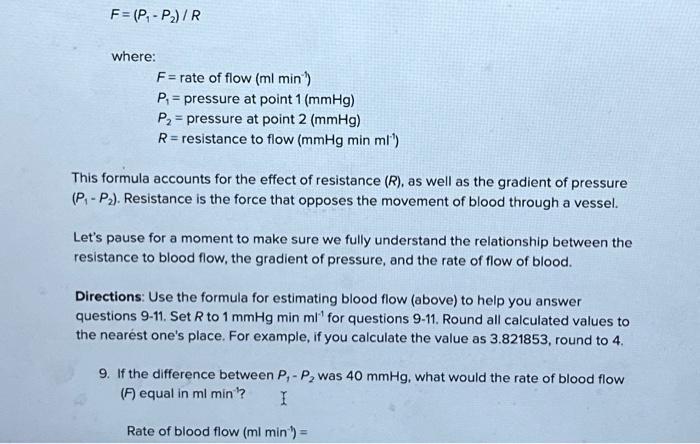Answered step by step
Verified Expert Solution
Question
1 Approved Answer
F = (P-P)/R where: F= rate of flow (ml min) P = pressure at point 1 (mmHg) P= pressure at point 2 (mmHg) R

F = (P-P)/R where: F= rate of flow (ml min) P = pressure at point 1 (mmHg) P= pressure at point 2 (mmHg) R = resistance to flow (mmHg min ml) This formula accounts for the effect of resistance (R), as well as the gradient of pressure (P-P). Resistance is the force that opposes the movement of blood through a vessel. Let's pause for a moment to make sure we fully understand the relationship between the resistance to blood flow, the gradient of pressure, and the rate of flow of blood. Directions: Use the formula for estimating blood flow (above) to help you answer questions 9-11. Set R to 1 mmHg min ml for questions 9-11. Round all calculated values to the nearest one's place. For example, if you calculate the value as 3.821853, round to 4. 9. If the difference between P, - P was 40 mmHg, what would the rate of blood flow (F) equal in ml min'? I Rate of blood flow (ml min) =
Step by Step Solution
There are 3 Steps involved in it
Step: 1
Given the formula F P P R and the values R 1 mmHg min ...
Get Instant Access to Expert-Tailored Solutions
See step-by-step solutions with expert insights and AI powered tools for academic success
Step: 2

Step: 3

Ace Your Homework with AI
Get the answers you need in no time with our AI-driven, step-by-step assistance
Get Started


